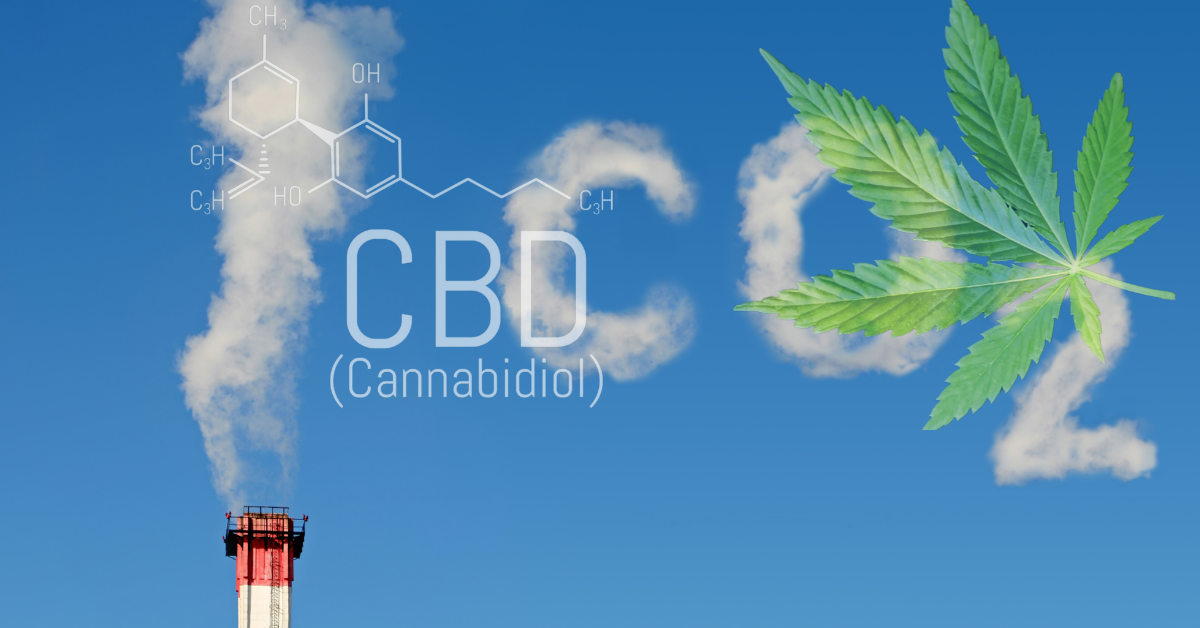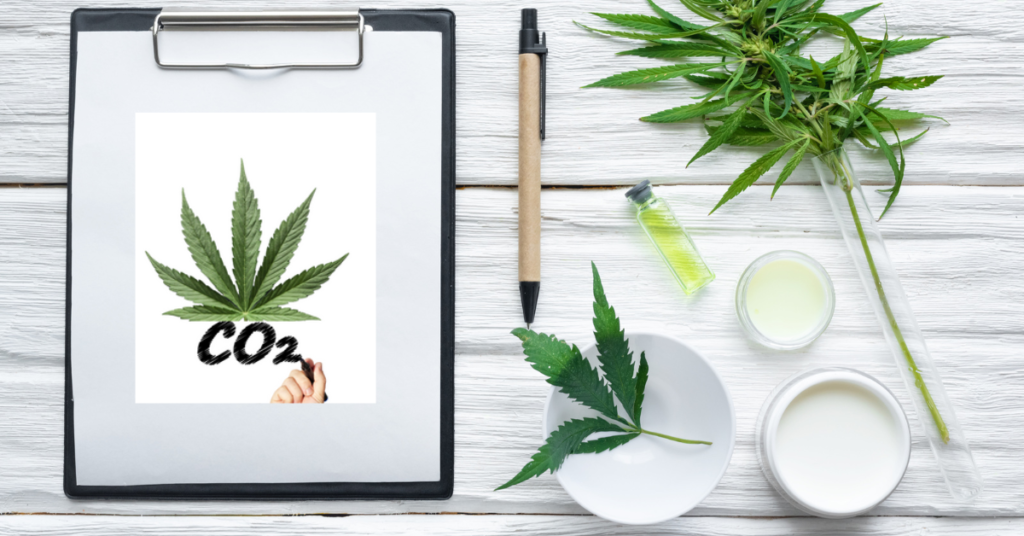Cannabis cultivation is a rapidly growing industry, and as growers constantly seek ways to optimize their yields, CO2 enrichment has become an essential tool for maximizing growth potential.
In recent years, cannabis cultivation has evolved dramatically, with growers using advanced techniques and technology to optimize plant growth and increase yields. One such technique is CO2 enrichment, which involves injecting additional carbon dioxide (CO2) into the grow room environment to boost plant growth. This method has been proven to significantly improve the growth and yield of cannabis plants when implemented correctly.
As we uncover the role of CO2 in plant growth and the benefits of CO2 enrichment for cannabis plants, we will understand why this technique has become indispensable for many cannabis growers. We will also explore the importance of monitoring and controlling CO2 levels in the grow room and share some success stories of CO2 enrichment in cannabis cultivation.
The Role of CO2 in plant growth
CO2 is a key component of plant growth, as it plays a critical role in the process of photosynthesis. Photosynthesis is the process by which plants convert light energy into chemical energy, which is used to fuel growth and other essential life processes. During photosynthesis, plants absorb CO2 from the atmosphere and use it to produce glucose, the primary energy source for plant cells.
In addition to glucose, photosynthesis generates oxygen (O2) as a byproduct released back into the atmosphere. This process is essential for life on Earth, as plants are the primary producers of O2, which is necessary for the survival of all aerobic organisms, including humans.
In the context of cannabis cultivation, CO2 is an essential element for healthy plant growth and robust yields. When CO2 levels in the grow room are optimized, cannabis plants can photosynthesize more efficiently, accelerating growth and increasing overall plant health.
Benefits of CO2 enrichment for cannabis plants
There are several benefits of CO2 enrichment for cannabis plants, which can contribute to improved growth, increased yields, and higher potency. Some of these benefits include:
-
Increased growth rate: Elevated CO2 levels can stimulate rapid plant growth, enabling plants to photosynthesize more efficiently. This can result in faster vegetative growth and larger and more robust plants.
-
Higher yields: CO2 enrichment has been shown to increase yields in cannabis cultivation significantly. When plants grow more rapidly and produce more biomass, they can generate higher yields of flowers and other usable plant material.
-
Improved potency: Some studies suggest that CO2 enrichment can enhance the production of cannabinoids, the active compounds found in cannabis plants. This means that plants grown with CO2 enrichment can potentially produce more potent flowers, which is especially important for medicinal cannabis cultivators.
-
Greater resistance to pests and diseases: CO2 enrichment can also improve the overall health of cannabis plants, making them more resistant to pests and diseases. A healthier plant is better equipped to prevent potential threats and maintain optimal growth.
Overall, CO2 enrichment can profoundly impact the success of cannabis cultivation, resulting in faster growth, higher yields, and improved potency.
The science behind CO2 enrichment: Photosynthesis process
To better understand the benefits of CO2 enrichment for cannabis plants, it’s important to delve into the science behind photosynthesis. As mentioned earlier, photosynthesis is the process by which plants convert light energy into chemical energy in the form of glucose.
Photosynthesis occurs in the chloroplasts of plant cells and involves two primary reactions: the light-dependent reactions and the light-independent reactions (also known as the Calvin cycle). The light-dependent reactions take place in the presence of sunlight and involve the absorption of light energy by chlorophyll, which is then used to generate ATP (adenosine triphosphate) and NADPH (nicotinamide adenine dinucleotide phosphate), two high-energy molecules that are essential for plant metabolism.
In the Calvin cycle, CO2 is fixed into an organic molecule through a series of enzyme-catalyzed reactions. The ATP and NADPH generated in the light-dependent reactions provide the energy and reducing power needed for these reactions to occur. The end product of the Calvin cycle is glucose, which is used to fuel plant growth and other essential life processes.
CO2 enrichment enhances the photosynthesis process by increasing the availability of carbon dioxide for the Calvin cycle. With more CO2 readily available, plants can fix more carbon into glucose, which ultimately leads to increased growth, higher yields, and improved potency.
Optimal CO2 Levels for cannabis cultivation
Regarding CO2 enrichment in cannabis cultivation, there is an optimal range of CO2 levels that promote the best growth and yields. Ambient CO2 levels in the atmosphere are typically around 400 parts per million (ppm). However, research has shown that cannabis plants can benefit from CO2 levels between 1,000 and 1,500 ppm.
It’s important to note that CO2 levels above 1,500 ppm may be detrimental to plant growth, as they can cause a reduction in the rate of photosynthesis and may even be toxic to plants. Therefore, it’s crucial for growers to carefully monitor and control CO2 levels in their grow rooms to ensure optimal growth and yield potential.
Methods of CO2 Enrichment for cannabis growers
Cannabis growers can use several methods of CO2 enrichment to boost plant growth and yields. Some of the most common methods include:
-
CO2 tanks: CO2 tanks or cylinders are a popular method of CO2 enrichment, as they provide a consistent and easily controllable source of CO2. Growers can connect a regulator to the tank, allowing precise control over the flow of CO2 into the grow room. This method is best suited for small to medium-sized grow rooms.
-
CO2 generators: CO2 generators produce CO2 by burning propane or natural gas. These devices are ideal for larger grow rooms, as they can generate significant amounts of CO2 quickly and efficiently. However, CO2 generators also produce heat and moisture, so it’s important to consider the potential impact on temperature and humidity levels in the grow room.
-
Fermentation: Fermentation is a natural method of CO2 enrichment that involves microorganisms’ decomposition of organic materials. By placing a container of fermenting material (such as sugar and yeast) in the grow room, growers can slowly release CO2 into the environment. This method is relatively inexpensive and easy to implement, but it may not provide the same level of precision and control as CO2 tanks or generators.
-
Compressed air: Some growers may choose to inject compressed air containing elevated CO2 levels into their grow rooms. This method can be effective in small grow spaces but may not be as efficient as other methods for larger operations.
Regardless of the method chosen, it’s essential for cannabis growers to closely monitor and control CO2 levels in their grow rooms to ensure optimal growth and yield potential.
Monitoring and controlling CO2 levels in your grow room
Effective monitoring and controlling CO2 levels in the grow room are crucial for successful CO2 enrichment. Growers should invest in a CO2 monitor or controller, which can measure CO2 levels in the grow room and adjust them as needed. Many CO2 controllers also allow for automated control of CO2 enrichment, making it easier for growers to maintain optimal levels throughout the growth cycle.
In addition to monitoring CO2 levels, growers should also pay close attention to other environmental factors, such as temperature, humidity, and light, as these can all impact the rate of photosynthesis and overall plant growth. By maintaining a well-controlled grow room environment, growers can ensure that their plants can utilize the benefits of CO2 enrichment fully.
Safety considerations for CO2 enrichment
While CO2 enrichment can offer numerous benefits for cannabis cultivation, growers need to be aware of potential safety concerns that may arise. Elevated CO2 levels can risk human health, as concentrations above 5,000 ppm can cause headaches, dizziness, and other symptoms, while levels above 40,000 ppm can be life-threatening.
To minimize the risk of CO2 exposure, growers should ensure that their grow rooms are well-ventilated and that CO2 enrichment equipment is functioning properly. It’s also important to have CO2 monitors and alarms in place to alert growers of any potential issues with CO2 levels.
Furthermore, growers using CO2 generators that burn propane or natural gas should be aware of the potential risk of carbon monoxide (CO) exposure, as these devices can produce CO as a byproduct of combustion. Proper ventilation and the use of CO detectors are essential for ensuring the safety of both the grower and the plants.
Case studies: CO2 enrichment success stories in cannabis cultivation
There are numerous success stories of cannabis growers who have implemented CO2 enrichment to boost their cultivation success. A study conducted by the University of Mississippi found that cannabis plants grown in an environment with elevated CO2 levels (1,500 ppm) produced significantly higher yields than plants grown in ambient CO2 conditions (400 ppm).
Another study published in the journal HortScience found that CO2 enrichment led to a 30% increase in the production of cannabinoids, the active compounds found in cannabis plants. This suggests that CO2 enrichment can not only improve growth and yields but also enhance the potency of cannabis flowers.
These case studies demonstrate the potential benefits of CO2 enrichment for cannabis growers and highlight the importance of implementing this technique to maximize cultivation success.
Conclusion: Maximizing cannabis cultivation success with CO2 enrichment
In conclusion, CO2 enrichment is a powerful tool that can significantly boost the growth, yield, and potency of cannabis plants. By understanding the science behind CO2 enrichment and the optimal CO2 levels for cannabis cultivation, growers can effectively implement this technique to maximize their success.
It’s important for growers to carefully monitor and control CO2 levels in their grow rooms and maintain a well-controlled environment overall. By doing so, they can ensure that their plants are able to fully utilize the benefits of CO2 enrichment and achieve their full growth potential.
As the cannabis industry continues to evolve and growers seek innovative ways to improve their cultivation practices, CO2 enrichment will remain a valuable tool for maximizing success and achieving the best possible results.

